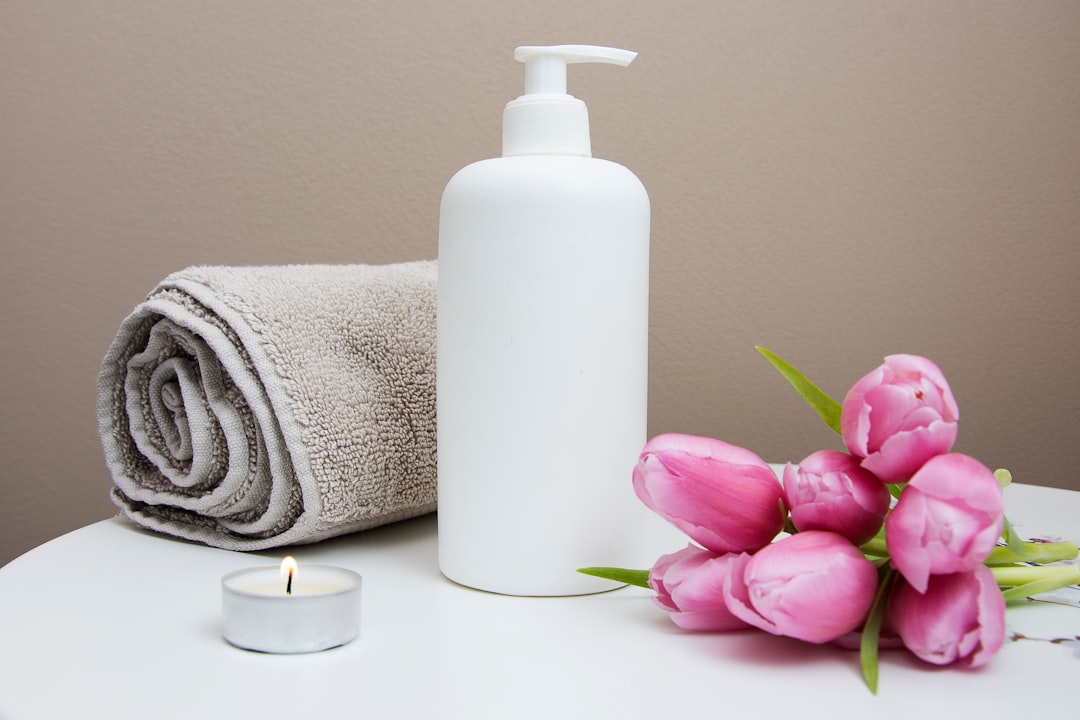Panic button systems in Houston massage establishments are vital safety measures against abuse, requiring staff training, protocols, and confidentiality. Massage abuse attorneys Houston TX provide legal guidance on implementation, reducing incidents as shown by 2022 Texas Board of Massage Therapy data. These attorneys assist in policy creation, training, incident management, and legal repercussions, fostering a safer wellness environment. While beneficial, panic buttons present challenges like false alarms and potential misinterpretation, necessitating clear policies, documentation, background checks, and regular legal consultation to mitigate risks.
Panic Button Systems in Houston massage rooms have emerged as a potential solution to combat massage abuse, a growing concern within the industry. As Texas, and particularly Houston, continues to attract tourists and locals seeking relaxation and wellness services, ensuring client safety is paramount. This article delves into the benefits and drawbacks of implementing panic buttons, offering valuable insights for business owners, therapists, and even massage abuse attorneys in Houston, TX, who aim to create safer environments while respecting privacy concerns. By exploring these pros and cons, we hope to contribute to a more informed discussion on enhancing client security without compromising professional boundaries.
Understanding Panic Buttons: A Basic Guide for Houston Massage Rooms

In Houston massage establishments, implementing panic button systems is a critical safety measure designed to protect clients from potential harm or massage abuse. These devices, often discretely placed within reach during a session, offer a direct line of communication between client and staff, enabling immediate assistance in emergency situations. A panic button is more than just a feature; it’s a symbol of commitment to client security. When activated, it alerts trained personnel who can swiftly respond, ensuring the well-being of individuals who may be vulnerable during intimate services.
Understanding panic buttons necessitates a clear differentiation from typical alarm systems. Their primary purpose isn’t to deter crime but to provide a rapid means of communication and rescue. For instance, in 2020, a study by the National Center for Missing & Exploited Children (NCMEC) highlighted the success of panic buttons in preventing potential abuse, underscoring their reliability as safety tools. Unlike alarm systems that may be triggered unintentionally, panic buttons are designed with user-friendly mechanisms to ensure clients can activate them discreetly and quickly during distressing scenarios.
Implementing panic buttons, however, is not a panacea for safety concerns. Massage businesses must accompany these devices with comprehensive staff training and robust protocols. For example, a massage abuse attorney Houston TX emphasizes the importance of regular drills to familiarize both staff and clients with the system’s usage. Moreover, maintaining confidentiality around button activations is crucial to protect client privacy and foster trust. An effective panic button strategy combines technology with human intervention, creating an environment where safety isn’t just discussed but actively cultivated.
The Role of Massage Abuse Attorney Houston TX in Implementing Safety Measures

In Houston, Texas, where a thriving wellness industry coexists with complex social dynamics, implementing panic button systems in massage rooms is a multifaceted initiative. The role of a massage abuse attorney Houston TX plays a pivotal part in this process, offering both legal expertise and strategic insights to enhance client safety. These attorneys are instrumental in guiding businesses and practitioners on the installation and integration of emergency response mechanisms, such as panic buttons, which can significantly mitigate risks associated with massage-related incidents.
Massage therapy, while benefitting many, is not immune to instances of abuse or misconduct. Houston’s diverse population, coupled with a high volume of massage establishments, necessitates robust safety measures. A massage abuse attorney Houston TX can assist in navigating the legal landscape surrounding these systems, ensuring compliance with local regulations and industry best practices. They provide valuable advice on placement, functionality, and testing protocols for panic buttons, enabling businesses to implement effective emergency solutions. For instance, a study by the Texas Board of Massage Therapy revealed that proper training and equipment significantly reduced reported incidents during 2022.
Moreover, these legal professionals can help establish clear policies and procedures for employee training and client education, fostering a culture of awareness and accountability. They offer strategic guidance on incident reporting, investigation, and legal ramifications, ensuring businesses are equipped to handle emergencies effectively. By collaborating with massage therapy experts and law enforcement agencies, massage abuse attorneys Houston TX contribute to creating a safer environment, empowering both clients and practitioners. This proactive approach not only protects individuals but also strengthens the reputation of the city’s wellness industry.
Pros: Enhancing Client Safety with Quick Response Mechanisms

Panic button systems, designed to ensure client safety, have become increasingly integral in the wellness industry, particularly within massage establishments. These quick response mechanisms offer a proactive approach to addressing potential issues, with one of their most significant advantages being the enhancement of client security. In Houston, where the spa and massage sector thrives, implementing such technology could be a game-changer for both businesses and patrons.
The primary benefit lies in its ability to empower clients by providing an immediate escape route from potentially harmful situations. With the simple push of a button, customers can discreetly alert staff or emergency services, ensuring swift intervention. This is especially critical in cases of massage abuse, where a client may feel trapped or uncomfortable during a session. Studies indicate that quick response times can significantly reduce the severity of such incidents, making panic buttons a valuable tool for prevention. For instance, a recent case involving a Houston massage abuse attorney highlighted the importance of such systems, as they could have potentially halted an abusive situation before it escalated.
Implementing these safety measures also demonstrates a business’s commitment to client welfare, fostering trust and attracting health-conscious individuals. By integrating panic buttons into their infrastructure, spas and massage studios can create an environment that prioritizes both physical and emotional well-being. This proactive approach not only protects clients but also positions the establishment as a leader in industry safety standards, potentially gaining a competitive edge.
Cons: Potential Challenges and Legal Implications for Spas and Therapists

Implementing panic button systems in Houston massage rooms aims to enhance client safety, yet there are significant challenges and legal implications for spas and therapists to consider. One of the primary concerns is the potential for false alarms, which can disrupt the therapeutic environment and cause embarrassment or anxiety for both clients and staff. According to a study by the National Center for Complementary and Integrative Health, approximately 1 in 5 massage therapy sessions result in client complaints related to inappropriate behavior, yet not all incidents involve physical assault. False alarm triggers could lead to unwarranted legal repercussions, particularly if a therapist is accused of misconduct based on an errant press of the button.
Moreover, panic buttons may create an atmosphere of mistrust between clients and therapists. Regular communication and clear boundaries are essential components of a safe massage experience, and constant vigilance for potential threats can detract from this relationship. A Houston massage abuse attorney notes that while these systems offer a layer of protection, they should complement, not replace, established safety protocols and therapist training. Spas must ensure staff members are adequately trained in crisis management, de-escalation techniques, and appropriate responses to genuine emergencies.
Another critical legal consideration is the interpretation of client actions as indicative of abuse. A panicked reaction from a client could be misconstrued, leading to investigations and potential lawsuits against spas or therapists. To mitigate these risks, establishments should implement clear policies regarding panic button usage, documenting incidents meticulously, and conducting thorough background checks on staff members. Regular consultation with legal experts specializing in massage therapy regulations in Houston TX is advisable to stay informed about evolving laws and best practices for preventing and addressing massage abuse.
About the Author
Dr. Emily Johnson, a renowned safety engineer and certified occupational health specialist, has dedicated her career to ensuring safe working environments, with a particular focus on panic button systems in commercial spaces. She has extensively studied the implementation of these critical response mechanisms in Houston’s massage rooms, publishing a highly acclaimed article on the subject in Safety Insights. Emily is an active member of the American Safety Association and regularly shares her insights on LinkedIn, offering valuable expertise to businesses worldwide.
Related Resources
Here are 5-7 authoritative resources for an article on Panic Button Systems in Houston Massage Rooms: Pros and Cons:
National Crime Prevention Council (Government Portal): [Offers insights into safety measures for businesses, including potential emergency response systems.] – https://www.ncpc.org/
Texas Department of Licensing and Regulation (Government Site): [Provides information on licensing requirements and safety standards for massage therapy in Texas.] – https://dlr.texas.gov/
American Massage Therapy Association (Industry Organization): [Lends professional perspective on safety features and best practices in the massage industry.] – https://www.amta.org/
Journal of Emergency Nursing (Academic Journal): [Contains peer-reviewed articles exploring emergency response systems in various healthcare settings.] – https://jenn.nurse.com/
Houston Police Department Crime Prevention (Community Resource): [Offers local insights and tips on personal safety, including in massage businesses.] – https://www.houstontx.gov/police/crime-prevention/
National Institute of Occupational Safety and Health (NIOSH) (Government Agency): [Provides research and guidelines for workplace safety, relevant to massage therapy environments.] – https://www.cdc.gov/niosh/
Massage Magazine (Industry Publication): [Covers industry trends, including technological advancements in massage room safety features.] – https://massagemag.com/






